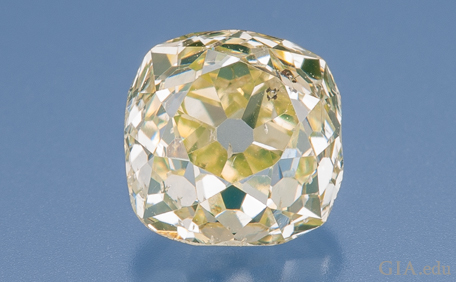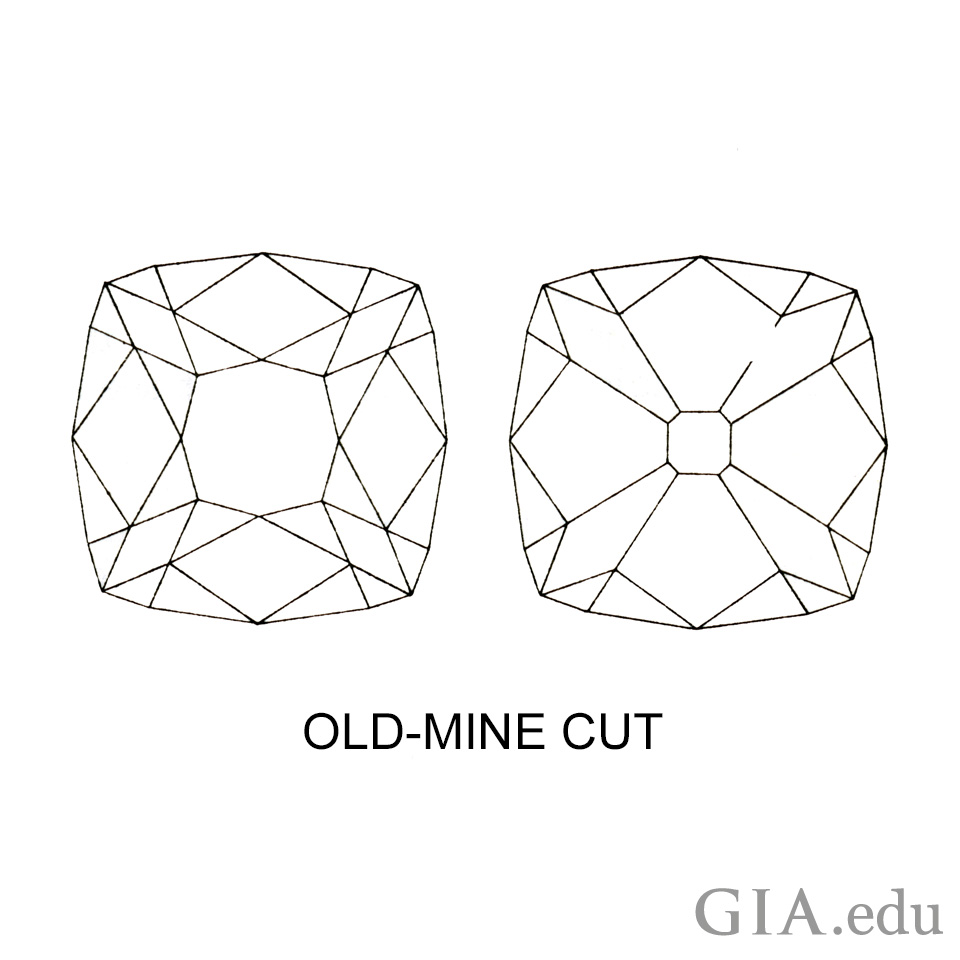An old mine cut diamond evokes the past, when diamonds were measured by eye and cut by hand, so this historic diamond cut is a great choice if you’re looking for an engagement ring with antique or vintage qualities. Read on to learn more about it.
From the early 18th century to the late 19th century, the old mine cut was perhaps the most common diamond cut and the cut you’ll most often find in Georgian (1714-1837) and Victorian era (1837-1901) jewelry. You can recognize an old mine cut diamond by its squarish shape: it has 58 facets like today’s modern round brilliant cut diamond, but that’s where the similarity ends. In addition to a different shape, an old mine cut has different diamond proportions: it typically has a smaller table, larger culet and higher crown. It also has short lower half facets and a girdle that is very thin in places and, as a result of these factors, an old mine cut diamond has a very distinctive look.
Early diamond cutters (today known as bruters) shaped old mine cut diamonds by following the octahedral shape of the diamond crystal, laboriously grinding two diamonds together to achieve the desired shape, and a diamond polisher then polished the facets. Due to the shape of the rough and because the diamonds were hand crafted, dimensions varied from stone to stone. This made every old mine cut diamond unique, or put poetically, have its own personality.
Old Mine Cut Diamond: What’s in a Name?
Some confusion surrounds the term “old mine cut,” especially as the term has evolved over the years. It probably came into common use around the late 1800s, at a time when diamond production from Africa began to eclipse production from the “old mines” of Brazil and even older mines of India. “Old mine cut,” originally meant any “brilliant,” cut squarish shape, colorless or near-colorless diamonds that originated in Brazil or India. Then, as African mines began producing diamonds of higher color quality, the term old mine cut was applied to any diamond with exceptional color and one that had the older style cut. Eventually, old mine cut was applied only to squarish-shaped diamonds with faceting arrangements that were popular beginning in the early 1700s.
Old Mine Cut Diamonds and Old European Cut Diamonds: What’s the Difference?
If you’ve been on the hunt for an antique or vintage engagement ring or a piece of diamond jewelry from the late Victorian era, Edwardian era (1901-1915) or Art Deco period, chances are you’ve run into the round old European cut diamond — not to be confused with an old mine cut diamond!
A precursor to today’s round brilliant cut diamond, the old European cut diamond has a round shape, a higher crown, and greater total depth than the modern round brilliant. The origins of the old European cut are also from the early 1700s.
|
The Old Mine Cut |
The Old European Cut |
The round diamond gained popularity in the late 1800s due to advances in cutting technology that helped refine and standardize the way diamonds were cut. The invention of the bruting machine in 1874 mechanized the diamond cutting process, giving cutters much greater precision and control. Diamond cutters were able to give diamonds a more perfect round shape and during this time they also modified the proportions to create greater scintillation (sparkle). Their new variation on the old European cut is called a “transitional cut” — a term you’re also likely to encounter as you shop for vintage or antique jewelry.

A beautiful Art Deco platinum engagement ring with a 1.38 carat (ct) old European cut diamond will flatter the finger of any bride. Photo: David Behl. Copyright: Janet Mavec & GIA
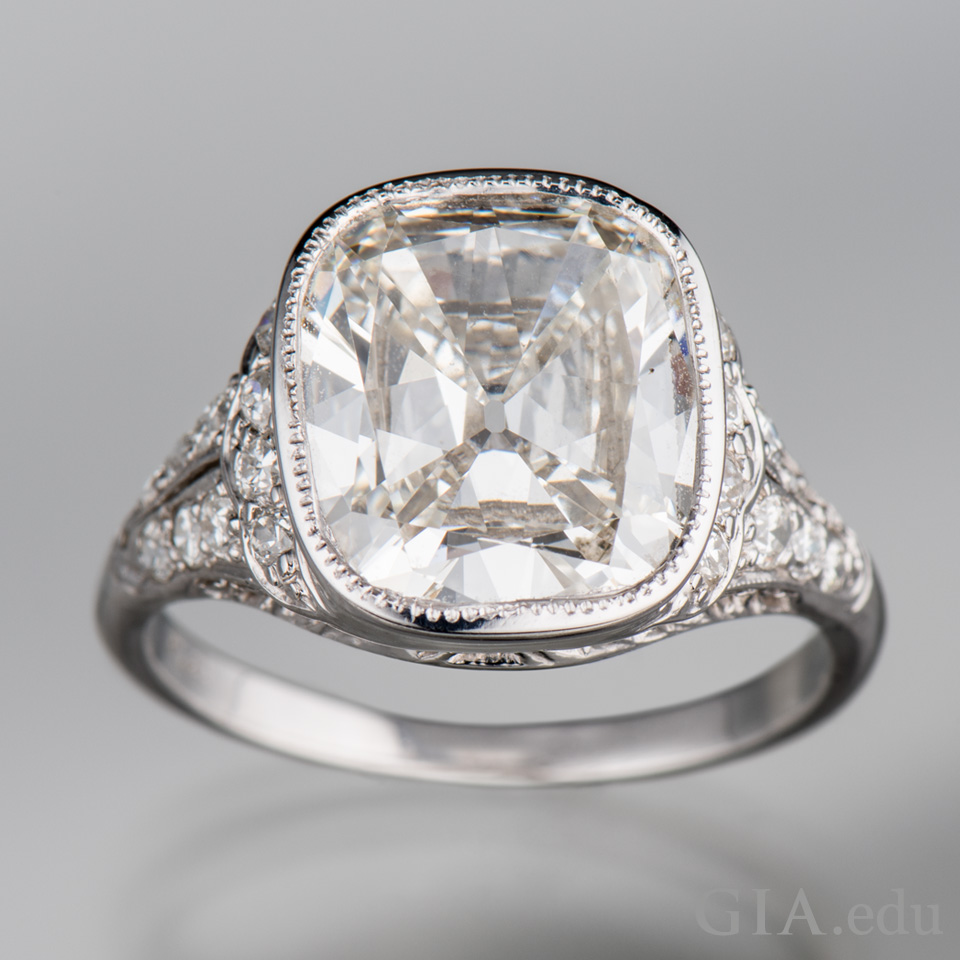
A beautiful 4.38 ct old mine cut diamond is arresting in a platinum setting. The piece dates to the Edwardian era (1901 – 1915). Photo: Kevin Schumacher/GIA. Courtesy: Bernard Nacht & Co.
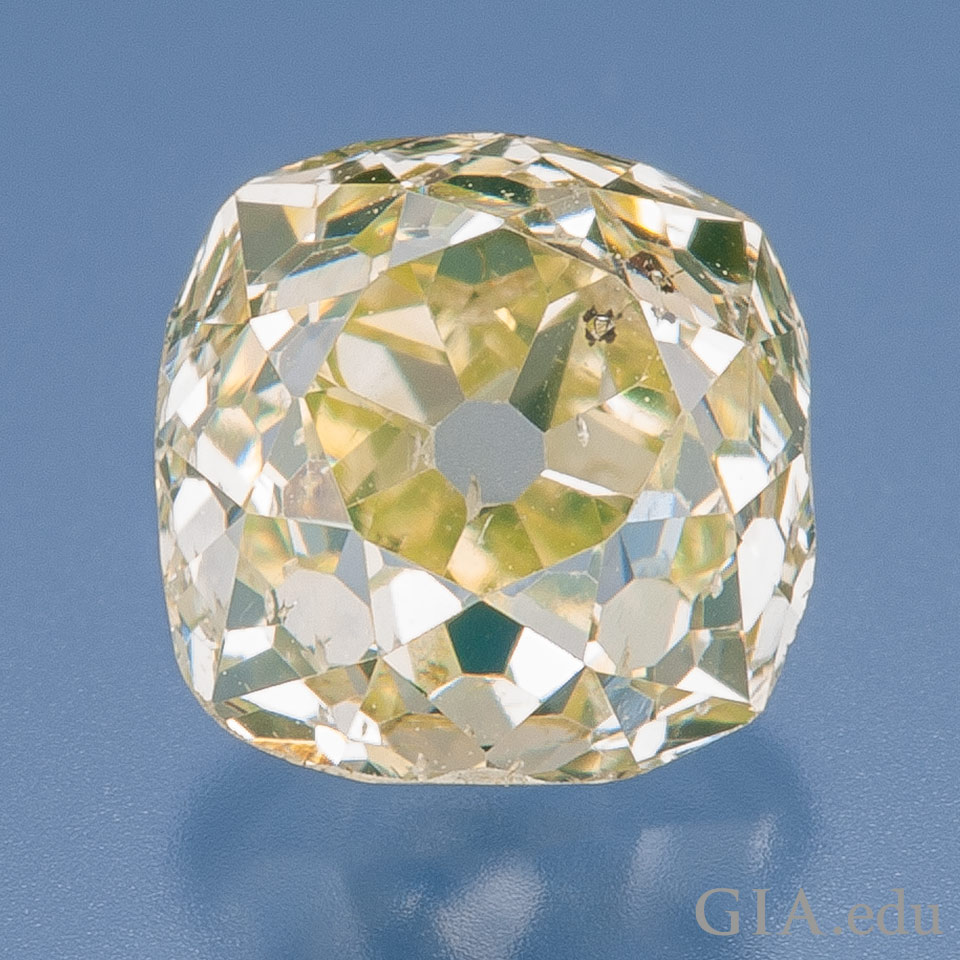
This old mine cut diamond has a squarish shape, large culet, small table and very steep crown angles. Photo: Orasa Weldon/GIA.
What to Look for in an Old Mine Cut Diamond
Interested in using an old mine cut diamond in an engagement ring? Here are some things to keep in mind:
- Light affects a diamond’s appearance, so be sure to view the diamond under different conditions.
- Expect to see a different contrast pattern (the pattern of white and dark areas caused by reflections within the diamond), as compared to modern diamond cuts.
- Expect to see a difference in fire (breaking of light into spectral or rainbow colors): since the facets are larger, you should notice larger, more striking patches of color (particularly under spot lighting).
- Because original older cuts may have exceptionally thin girdles, be sure that the girdle is fully protected all the way around the diamond, leaving no edge exposed. Read our post on diamond solitaire settings to find out how to protect your diamond.

Classic meets contemporary: Jewelry designers are using old mine cut diamonds in contemporary jewelry – like these 18K gold earrings set with old mine cut diamonds weighing 10.15 carats total. Photo: David Behl. Copyright: Janet Mavec & GIA
Engagement Rings with an Old Mine Cut Diamond
If you’re looking for an engagement ring that’s out of the ordinary, the unique beauty of an old mine cut diamond is a good place to start. Since these diamonds were fashioned long ago, your best chance of finding an original old mine cut diamond is probably with a jeweler who sells antique jewelry. The jeweler can help you locate an antique engagement ring, or possibly locate an unmounted old mine cut diamond, which you can then set into a mounting of your choice. You might also consider a replica of old mine cut: due to the rising popularity of vintage style engagement rings and jewelry, some diamond cutters are fashioning diamonds in the older cutting styles.
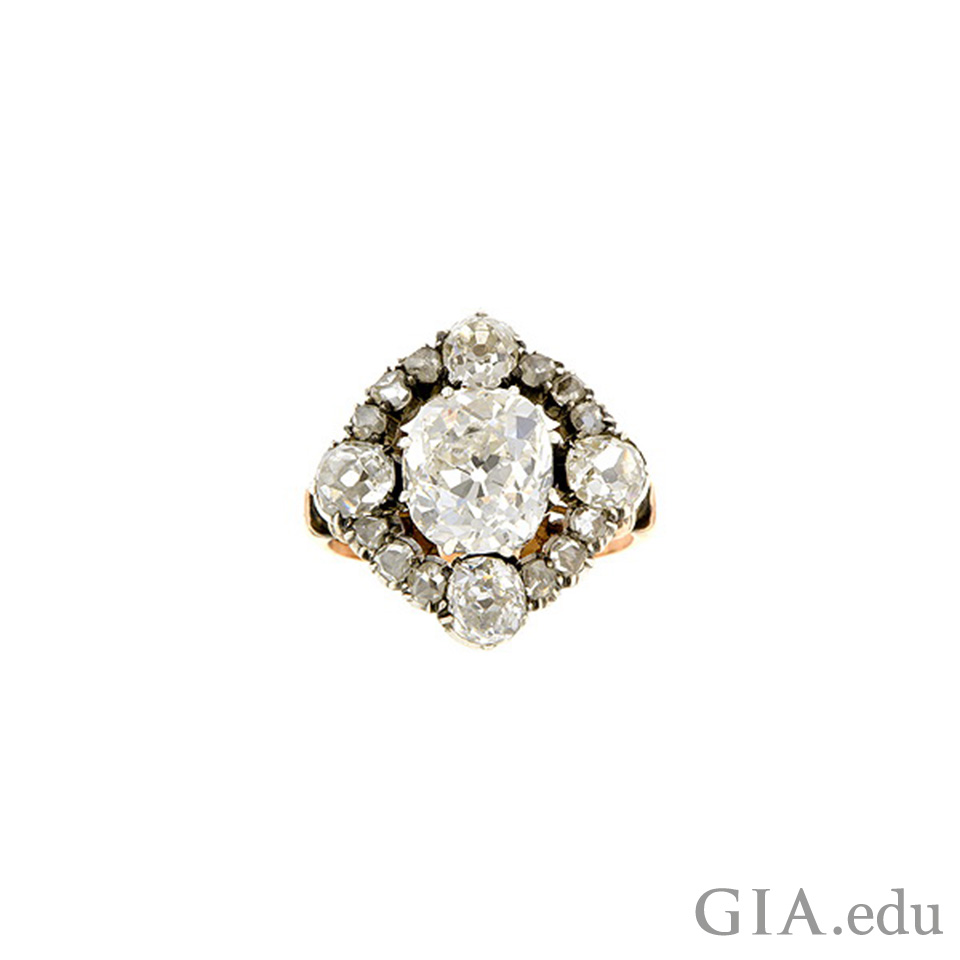
This Georgian era ring (circa 1830) features a 2.77 ct old mine cut diamond. It is surrounded by four old European cut diamonds weighing approximately 1.20 carats total weight and twelve rose cut diamonds. Courtesy: Doyle & Doyle
The old mine cut is versatile: it is attractive in a number of settings and with or without side stones.

A beautiful 3.56 ct old mine cut diamond is surrounded by French cut rubies and dazzling round diamonds, in a bezel setting. Courtesy: 1stdibs.com
If you want a contemporary version of an old mine cut diamond, you may want to consider cushion cut diamonds. They take their inspiration in part from old mine cuts: they have a squarish outline and brilliant cut facets and offer an attractive modern alternative to an old mine cut.

A breathtaking platinum ring set with a 4.20 ct cushion cut diamond center stone and 99 round brilliants weighing 0.84 carats to add additional drama. Courtesy: Platinum Guild International, USA
For engagement rings, old mine cut diamonds come with built-in romance: they are treasures from the past that symbolize a fulfilling lifetime of commitment and happiness. And that’s why you might just fall in love with them!
If you’re looking to recreate an engagement ring from a by-gone era, be sure to consult our blog post on Antique Engagement Rings for inspiration.
